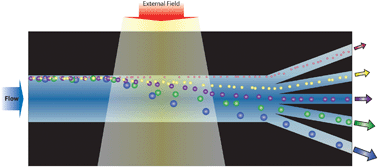Continuous separation of cells and particles in microfluidic systems†
Abstract
The progress in microfabrication and lab-on-a-chip technologies has been a major area of development for new approaches to bioanalytics and integrated concepts for

- This article is part of the themed collection: From microfluidic applications to nanofluidic phenomena

 Please wait while we load your content...
Please wait while we load your content...